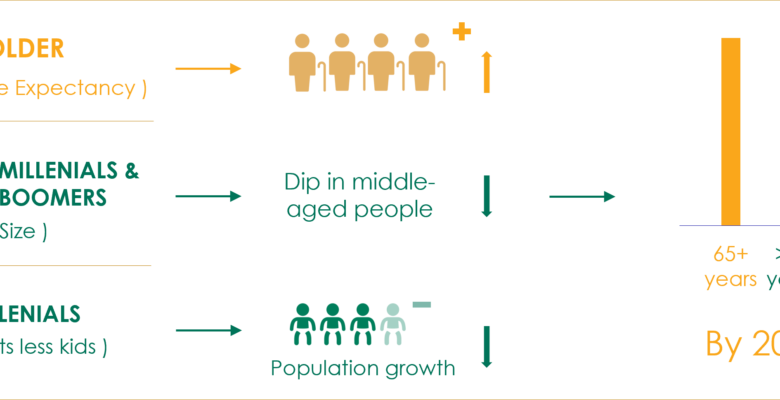This research aims to present the impact that COVID-19 had in the field of geriatrics. The article showcases challenges faced and current behavioral trends seen in the elderly population post-pandemic as it pertains to their healthcare needs. The aging population is the most vulnerable group of patients being cared for by the social care systems and healthcare providers across the world. There are three major reasons. First, the aging population is living longer than seen in the past. Recent studies suggest that in the next 10-15 years, the population of people 65 and older will outnumber the population 18 and younger, making them a majority. Secondly, as per research, 65 percent of the adults in the 65-84 age group have two or more chronic conditions. And lastly, with the increase in the use of technology to deliver healthcare, it is important to understand how the aging population will receive care while they are still adapting to new technologies.
This research on recent innovations in the environmental design and technology of the aging population was informed by a literature review and survey. This article investigates the myriad ways in which healthcare services are designed for the growing, aging population. The purpose of this study was to analyze the effects of these evolving trends on healthcare facilities and the care spaces they access and to identify new ways of designing environments. The findings highlight the urgent need to rethink the design of the built environment to make it truly inclusive and universal for the well-being of this population in the present and the future.
This article originally appeared in Vol 14.02 of the Perkins&Will Research Journal. CLICK HERE to see the whole article.

